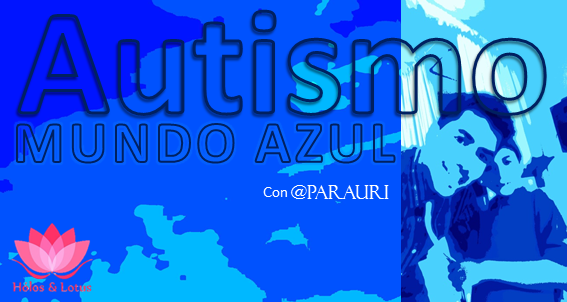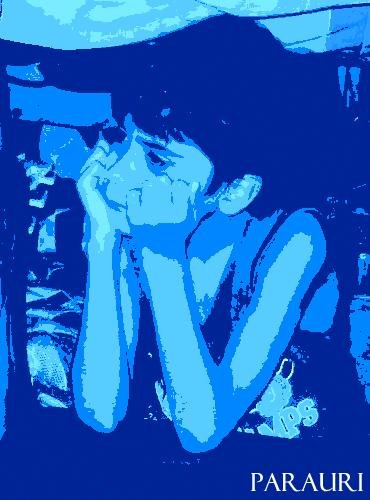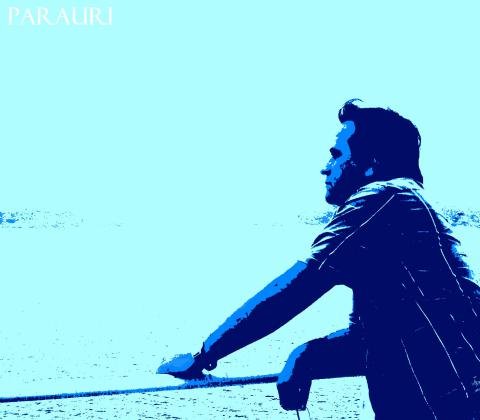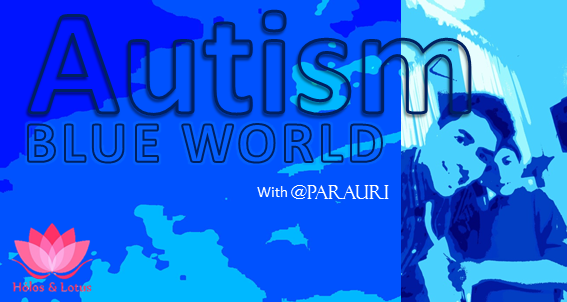
El contacto visual entre los individuos es calificado como una norma social que debe existir para establecer vínculos y para que ocurra una buena comunicación. Ciertamente, el contacto visual es una de las acciones principales para la conexión entre las personas, y la sociedad ha instaurado la importancia de mirar directamente a los ojos como un asunto de modales que simboliza concentración, sin embargo hay personas que evitan las miradas por sentirse incómodas como el caso de los autistas.
Una de las características que se suele resaltar cuando se habla del Trastorno del Espectro Autista, es la relacionada con la mirada fija, aquella perdida, como ausente, por lo que se dice que la persona con autismo no tiene contacto visual. Incluso esta característica es una señal de alerta para el diagnóstico de la condición. Esta particularidad en la conducta indica el deficiente desarrollo emocional que afecta las destrezas sociales y comunicacionales, lo que puede agudizarse o superarse de acuerdo a la atención brindada en cualquiera de los niveles de autismo: Severo, moderado y leve.

Entre la diversidad de casos de autismo que existen en el mundo se encuentran niños y adultos que mantienen con esfuerzo el contacto visual, es decir que esta deficiencia emocional, social y comunicacional puede superarse con estrategias aplicadas de acuerdo a las necesidades de cada individuo. Lo que deja claro que las personas autistas si pueden mantener la mirada directamente a los ojos de otra persona y por eso los especialistas se valen de distintas herramientas visuales y estrategias que estimulan el contacto visual con éxito.
Ante un niño con autismo que ha sido diagnosticado temprano y emprendido las acciones de apoyo familiar y profesional, se ven los frutos traducidos en la modificación de algunas conductas como aprender a mantener la mirada o mejorarla. Cual sea el caso, el niño autista que recibe atención en esta deficiencia es alentado y es integrado, aunque no dejará de ser un individuo introvertido pero logrará no estar completamente escondido del mundo “normal.”

Por lo general, la mirada esquiva en los niños preocupa pues esta debe ser fija desde los primeros meses de vida, en caso contrario lo recomendable es referir esta conducta al pediatra quien hará la valoración pertinente. De ser necesario se solicitará una evaluación neurológica para determinar la causa, pues existen varias, desde problemas en el nervio óptico, hasta algún trastorno del neurodesarrollo como el autismo. Aunque este puede sospecharse siendo un bebé, un diagnostico preciso se puede hacer a partir de los 18 meses, sin embargo hay quienes prefieren esperar la edad de 3 años.
Es muy importante que los padres o cuidadores de niños estén atentos porque la debilidad en el contacto visual se puede presentar en los niveles de autismo modero y leve, es decir que no es solo una característica del autismo severo o puro, que es el autismo profundo. Como he dicho en otras oportunidades, sin importar el tipo de autismo todos los casos pueden presentar mejorías, como el mejor manejo de la mirada.

Estrategias que estimulan el contacto visual en los autistas:
Los niños con autismo tienden a fijar la mirada en los objetos de su interés que en los ojos de las personas, por eso pon atención a las siguientes tácticas que Cognitivo Centro de Terapias ofrece:
Hablarle de frente y en la misma altura del niño: Cuando se le habla al niño hay que estar a su altura, si está sentado sentarse frente a él, si está de pie agacharse al nivel de su estatura. Esto facilita al niño contacto visual.
Mantener distancia: Estar separado sin mucho acercamientos que haga sentir invadido al niño y le cause sensación de acoso.
Mostrar los materiales de trabajo: Siempre a la altura de los ojos presentarle los juguetes, piezas, tarjetas, libros y todos los elementos que se vayan a utilizar.
Hablarle de temas de su interés: Capta su atención con temas cortos sobre temas que le apasionen o que sepas que despiertan su interés.
Ubica las cosas que interesan al niños frente a tu cara: Cuando el niño te pida uno o varios objetos de su interés colócalos frente a tu rostro.
Hacer que toque tu cara: Con sutileza tomar sus manos y ponerlas en tu cara. Esta estrategia es muy importante y de debe darse de acuerdo a la disposición del niño, sin forzarlo.
Jugar frente al espejo: Algo tan divertido como lo es jugar frente al espejo es una estrategia que ofrece muy buenos resultado, porque el niño puede encontrar su mirada.
Puedes ampliar las estrategias consultando la Fuente.
El éxito de éstas y otras estrategias que con seguridad nuestras amigas @sandracabrera, @nanyuris y @zullyscott pueden ampliar, dependerá del seguimiento adecuado, por parte de los padres en conjunto con los médicos especialistas y terapistas. La documentación de los padres sobre la atención eficaz al niño con autismo, garantizará que este se desarrolle como un ser integral. Una vez que el autista alcanza la edad adulta, logra, aunque con cierta dificultad, mantener mejor la mirada pero necesita seguir descubriendo paso a paso, a su propio ritmo que no está aislado en su propio mundo.

Crezcamos juntos:
📢 Los autistas pueden mejorar su contacto visual.
📢 Existen estrategias para estimular la mirada directa a los ojos.
📢 Los autistas mejoran emocional, social y comunicacionalmente con el progreso en el contacto visual.
📢 Hay que buscar a tiempo orientación de personal especializado en autismo.
AUTISMO: Mundo azul 💙
Puedes visitar mi página:
Autismo: Un Mundo Excepcional
Conoce su nuevo Proyecto en HIVE
Comunidad MUNDO AUTISMO
Banner de la Columna diseñado por @parauri.
Fotos y todas las imágenes propias.
Fuente consultada Cognitivo Centro de Terapia.
•• ENGLISH ••

Eye contact between individuals is qualified as a social norm that must exist in order to establish bonds and for good communication to occur. Certainly, eye contact is one of the main actions for the connection between people, and society has established the importance of looking directly into the eyes as a matter of manners that symbolizes concentration, however there are people who avoid looks because they feel uncomfortable as in the case of autistic people.
One of the characteristics that is usually highlighted when talking about Autism Spectrum Disorder, is related to the fixed gaze, that lost, as absent, so it is said that the person with autism has no eye contact. Even this characteristic is a warning sign for the diagnosis of the condition. This particularity in the behavior indicates the deficient emotional development that affects the social and communicational skills, which can be sharpened or overcome according to the attention provided in any of the levels of autism: Severe, moderate and mild.

Among the diversity of cases of autism that exist in the world are children and adults who effortlessly maintain eye contact, meaning that this emotional, social and communicational deficiency can be overcome with strategies applied according to the needs of each individual. This makes it clear that autistic people can keep looking directly into the eyes of another person and that is why specialists use different visual tools and strategies that stimulate eye contact successfully.
In the case of a child with autism who has been diagnosed early and who has undertaken the actions of family and professional support, we see the fruits translated into the modification of some behaviors such as learning to maintain the gaze or improve it. Whatever the case, the autistic child who receives care in this deficiency is encouraged and is integrated, although he will not cease to be an introverted individual but will manage not to be completely hidden from the "normal" world.

In general, the elusive gaze in children is of concern because it should be fixed from the first months of life, otherwise it is advisable to refer this behavior to the pediatrician who will make the appropriate assessment. If necessary, a neurological evaluation will be requested to determine the cause, since there are several causes, from problems in the optic nerve to a neurodevelopmental disorder such as autism. Although this can be suspected as a baby, an accurate diagnosis can be made from the age of 18 months, however there are those who prefer to wait until the age of 3 years.
It is very important that parents or caregivers of children are attentive because the weakness in eye contact can occur in the levels of mild and moderate autism, that is to say that it is not only a characteristic of severe or pure autism, which is the profound autism. As I have said on other occasions, regardless of the type of autism, all cases can present improvements, such as better gaze management.

Strategies that stimulate eye contact in autistics:
Children with autism tend to fix their gaze on objects of their interest than on people's eyes, so pay attention to the following tactics that Cognitivo Centro de Terapias offers:
Speak to the child from the front and at the same height as the child: When talking to the child you have to be at his height, if he is sitting sit in front of him, if he is standing bend down to the level of his height. This makes it easier for the child to make eye contact.
Keep distance: Be separate without too much approach that makes the child feel invaded and causes a sense of harassment.
Show work materials: Always at eye level present toys, parts, cards, books and all items to be used.
Talk to him about topics of his interest: Capture his attention with short topics on subjects he is passionate about or that you know pique his interest.
Place things that interest the child in front of your face: When the child asks you for one or more objects that interest him/her, place them in front of your face.
Have him touch your face: Gently take his hands and put them on your face. This strategy is very important and should be given according to the child's disposition, without forcing it.
Playing in front of the mirror: Something as fun as playing in front of the mirror is a strategy that offers very good results, because the child can find his look.
You can expand the strategies by consulting the Source.
The success of these and other strategies that for sure our friends @sandracabrera, @nanyuris and @zullyscott can expand on, will depend on proper follow-up, by parents in conjunction with medical specialists and therapists. Parental documentation of effective care for the child with autism will ensure that the child develops as a whole being. Once the autistic reaches adulthood, he or she manages, albeit with some difficulty, to maintain a better gaze but needs to continue to discover step by step, at his or her own pace that he or she is not isolated in his or her own world.

Let's grow together:
📢 Autistic people can improve their eye contact.
📢 Strategies exist to stimulate direct eye gaze.
📢 autistic individuals improve emotionally, socially and communicatively with progress in eye contact.
📢 Guidance should be sought in a timely manner from personnel specialized in autism.
AUTISM: Blue World 💙
You can visit my page:
Autismo: Un Mundo Excepcional
Learn about his new Project in HIVE
MUNDO AUTISMO Community
Column banner designed by @parauri.
Photos and all own images.
Source consulted Cognitivo Centro de Terapia.
¡Seguimos en sintonía!

¡Suscríbete! / Subscribe!
C/Holos&Lotus
Síguenos en Twitter / Follow us on Twitter
Entra a nuestro servidor de Discord en este enlace / Log in to our Discord server at this link 👇


- Banner elaborado en Power Point por @parauri / Banner elaborated in Power Point by @parauri
- Banner de la Comunidad diseñada por la artista @berlissanoja / Community Banner designed by artist berlissanoja
- Logo de la Comunidad elaborado por el diseñador @casilokodesign / Community logo designed by designer casilokodesign
